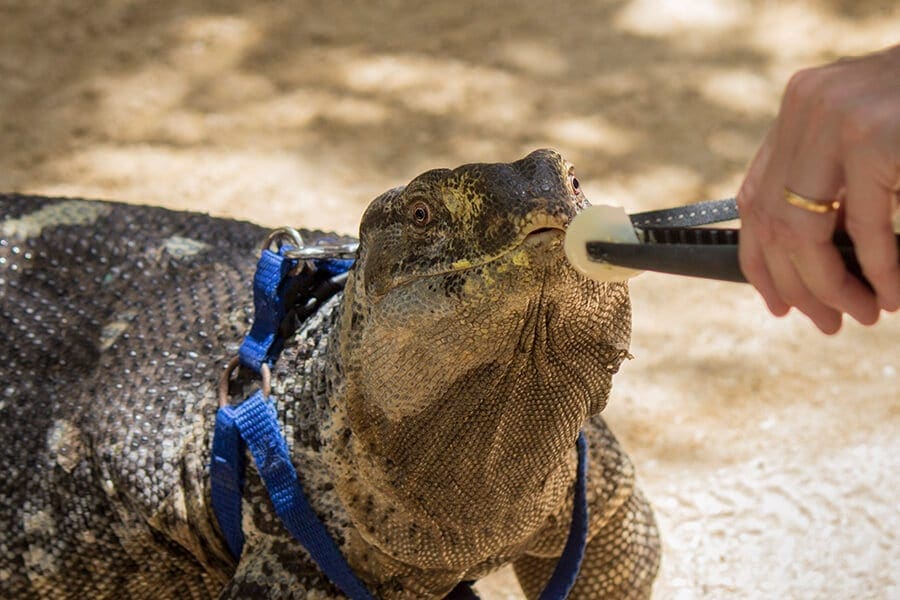

Philly opens her mouth for an oral inspection.
Click, click, click. The glass wall slides open slowly. Philly the jaguar rouses from an afternoon nap and scuttles over to the newly exposed mesh. Her eyes are on the keeper, here for one of Philly’s daily training sessions.
“Open,” suggests the keeper as she mimics a widening maw with her hands. Philly complies, exposing an impressive set of canines. The keeper quickly examines Philly’s teeth for abnormalities and, finding none, reinforces the behavior with a pointed “good” and a juicy raw meatball.
It’s one of many behaviors our animal care staff have trained Philly to execute.
“Training keeps animals’ minds and bodies active and builds a positive relationship with the keepers,” said Ellen Dreyer, the Zoo’s animal behavior and wellness coordinator. “It also helps us keep an eye on their health without resorting to more invasive techniques like anesthesia.”

Ren receives a hard-boiled egg—one of his favorite food items—as positive reinforcement.
Virtually every animal at the Zoo is trained in one way or another. Fancy the Visayan warty pig is conditioned to sit still for a sonogram, Ren the monitor lizard will tap a target with his nose for a hard-boiled egg and Iggy the zebra is learning how to present her hooves for trimming.
Our keepers use a technique called “positive reinforcement.” This means that if an animal chooses to participate in a training session and perform a behavior we’re asking for, the keepers will reinforce that decision with a food reward. If the animal doesn’t feel like engaging with a keeper, no harm, no foul, he or she just won’t receive the reward.
Want to learn more about zoo animal training? Observe a session for yourself! Click here to view the daily animal encounter schedule.
